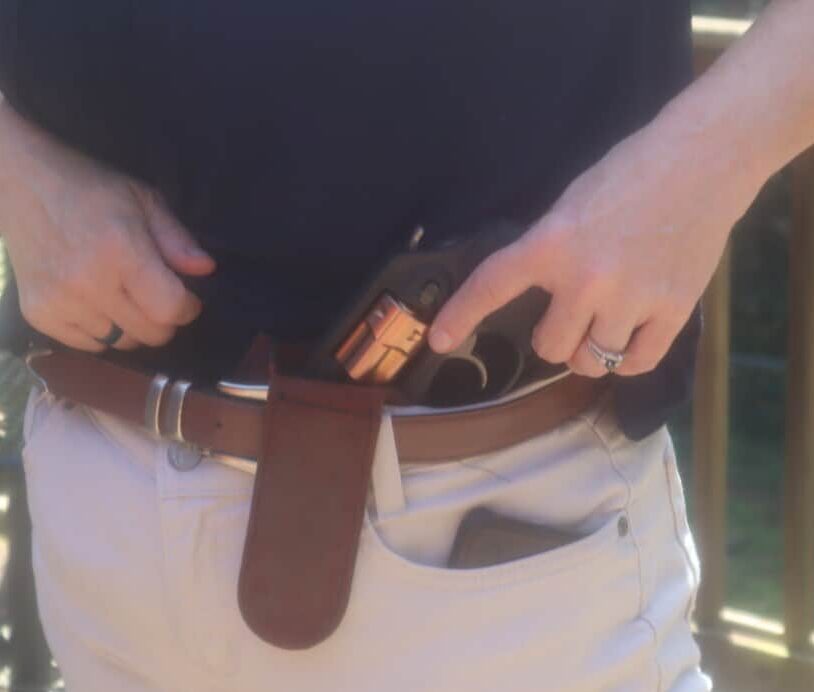Let’s face it: we women don’t have as easy a time concealing a weapon as men because of the greater variety of our clothes and the contours of our bodies.
Let’s explore fifteen ways to carry concealed while maintaining our vast and varied wardrobes.
- Pocket carry with a friction holster
- Outside the waistband with a flowy, untucked top
- In the waistband with a sturdy belt
- Next to the skin with a friction holster
- Kangaroo style pouch under clothing
- Belly band under clothing
- Corset holster under clothing
- Thigh holster under clothing
- Calf or ankle holster under long pants, long skirt, or boots
- Shoulder holster under a coat or jacket
- Bra Holster
- Special Underwear with built in holster
- Backpack, briefcase, or daytimer
- Fanny pack
- Purse
Planning For Wardrobe Variability
Men’s clothing is full of pockets and nice thick waistbands set predictably at the waist. They have a habit of attaching random things to their waistbands even if they don’t carry a gun, so the eye goes right past all those holsters filled with cell phones and other gadgets of the electronic world in which we live.
We expect our clothes to highlight our thinnest parts, deflect attention from the parts we think are not so great, and present a smooth overall image to the world. Deciding to add a gun to the mix presents a bit of a challenge. The nice thing is that with endless variety come endless choices.
A man will probably settle on one method of carrying and use it almost all the time. He may have six holsters but they will be variations on a theme.
A woman will decide each day where she puts her gun based on her activities for the day, the weather, and even which clothes fit better that day. We go up and down in pounds and inches more dramatically than the average male.
Our plan for concealed carry, then, is likely to have multiple layers. Let’s explore the possibilities.
Pocket Carry
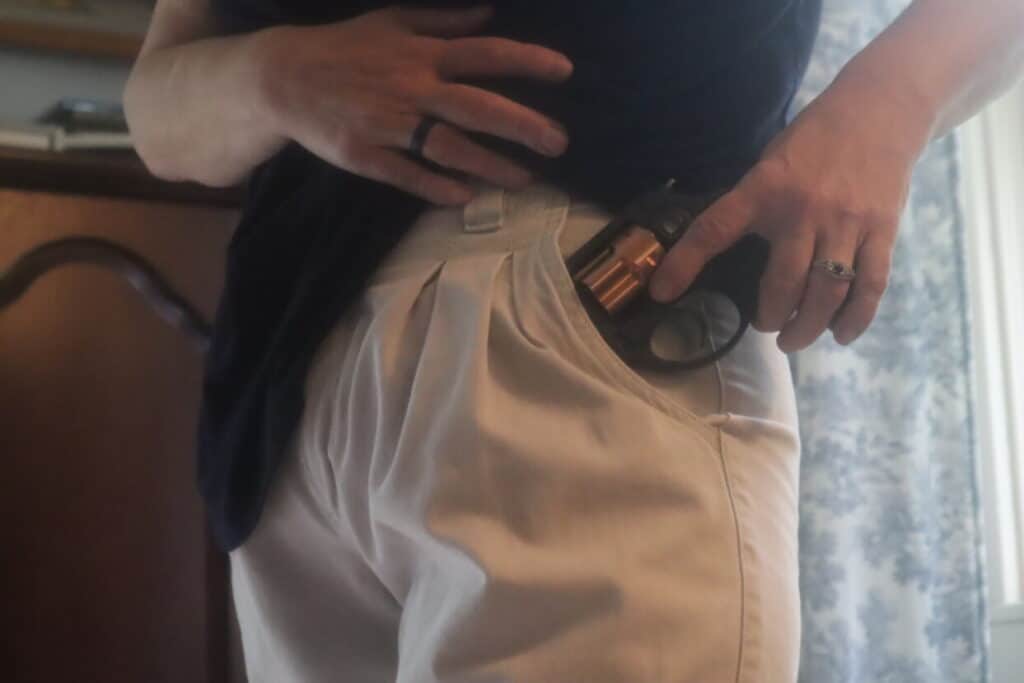
Going back to the Old West and beyond, when women wore wide floor length skirts, the pocket pistol was the way to go. Those dresses had big side pockets that accommodated the things a woman had to carry without changing the silhouette.
If you choose pocket carry, you will need to have bigger pockets than most women’s pants include today. Pleated trousers may have enough room. Get used to thinking about the size of your gun when you try on pants.
You will have to dedicate a whole pocket to your weapon to avoid pocket contents crawling up the barrel of your gun and messing up its inner workings.
When you draw from your pocket, the holster will stay in the pocket as your gun leaves in your hand.
You will have to limit the size of your gun and perhaps settle for a smaller caliber.
You will need a holster to avoid accidentally activating the trigger in the course of your daily activities. Think of all the times the phone in your pocket has turned on its flashlight or activated voice commands when you were just shifting in your seat.
Outside the Waistband
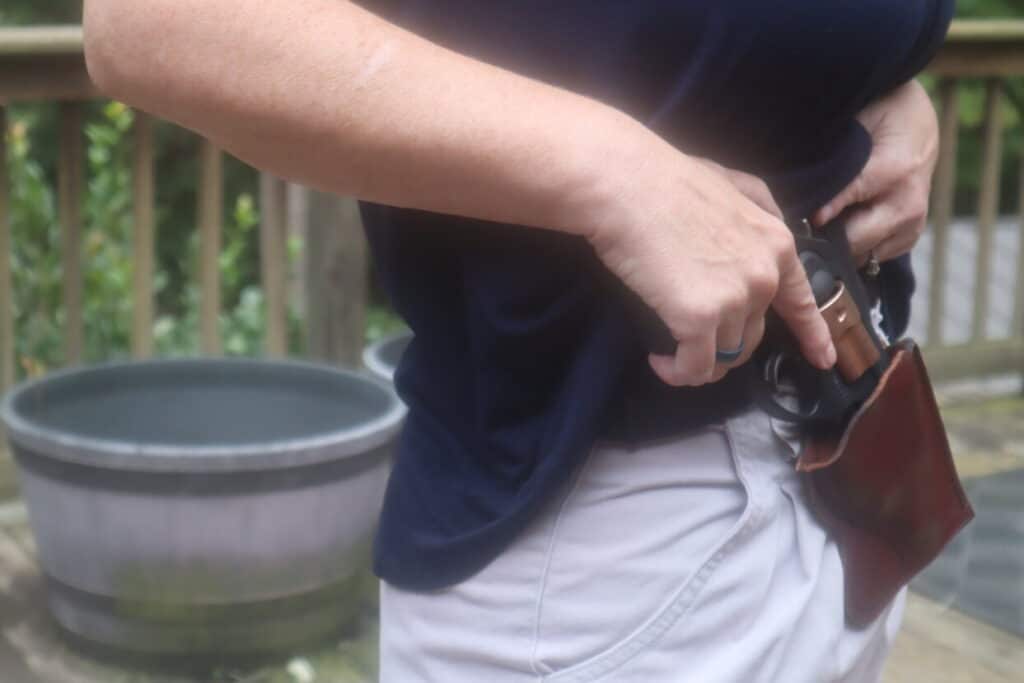
The default standard for concealed carry is at the waistband. With loose, flowy clothing you can carry outside the waistband (OWB). This may be the most comfortable way to carry because the gun is riding outside your pants, supported by a sturdy belt.
You need plenty of extra length in your untucked shirt so that you can raise your hands and bend over without displaying the gun. A too-light fabric may be picked up by a wind gust, lifting up the hem briefly to show off your weapon at an inopportune time.
Opacity may also be an issue. Make sure you are not able to see the gun through the fabric.
Inside the waistband
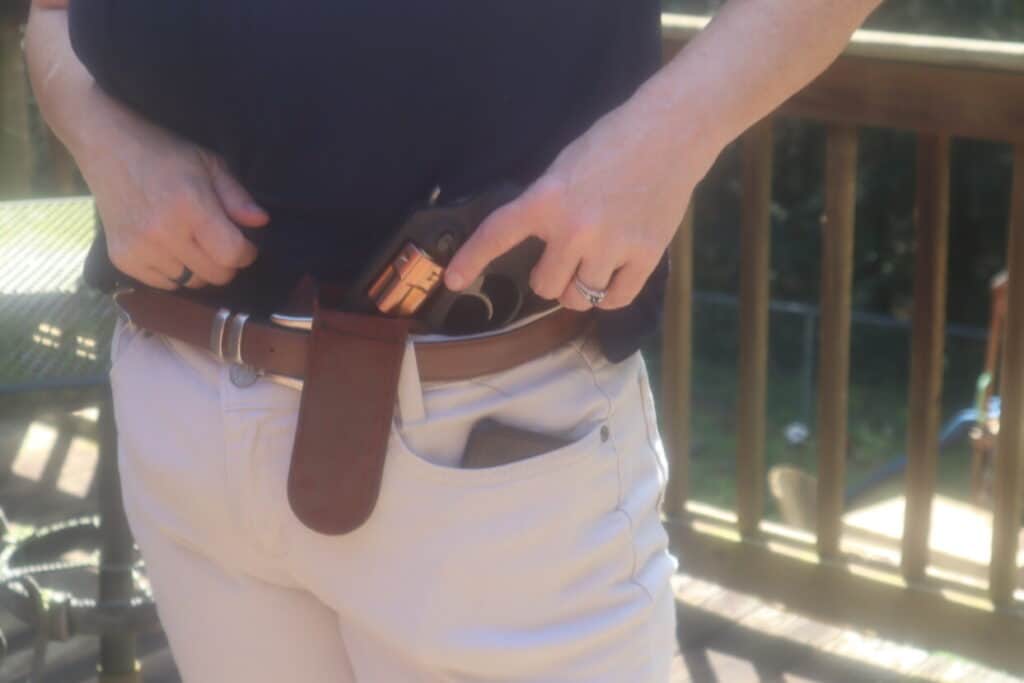
Deeper cover is obtained with inside the waistband (IWB) holsters. They slide in between your waistband and your skin. An undershirt will help if this causes irritation. An offset clip on an IWB holster can make it possible to tuck in your shirt.
You still need enough room in that shirt to make a clean line without an obvious lump that announces you are carrying something extra. You might need to go up a pant size for IWB carry.
We Have to Address the Bathroom Issue
Both IWB and OWB present an issue with going to the bathroom. Because we sit to pee, we pull the pants down multiple times a day. Now the gun is balancing on your lowered waistband while you are doing your business.
Make sure the holster grips well enough that the gun won’t fall out in this precarious position. Be aware that the woman next to you in a multiple stall situation may catch a glimpse of the waistband of your pants. This accidental disclosure of your gun could lead to explanations that you don’t feel like making.
Inside the Waistband With Friction
Sticky holsters that reside in the waistband due to the friction of your pants against your skin will require special planning because there may be no place to set the holster in a public restroom stall.
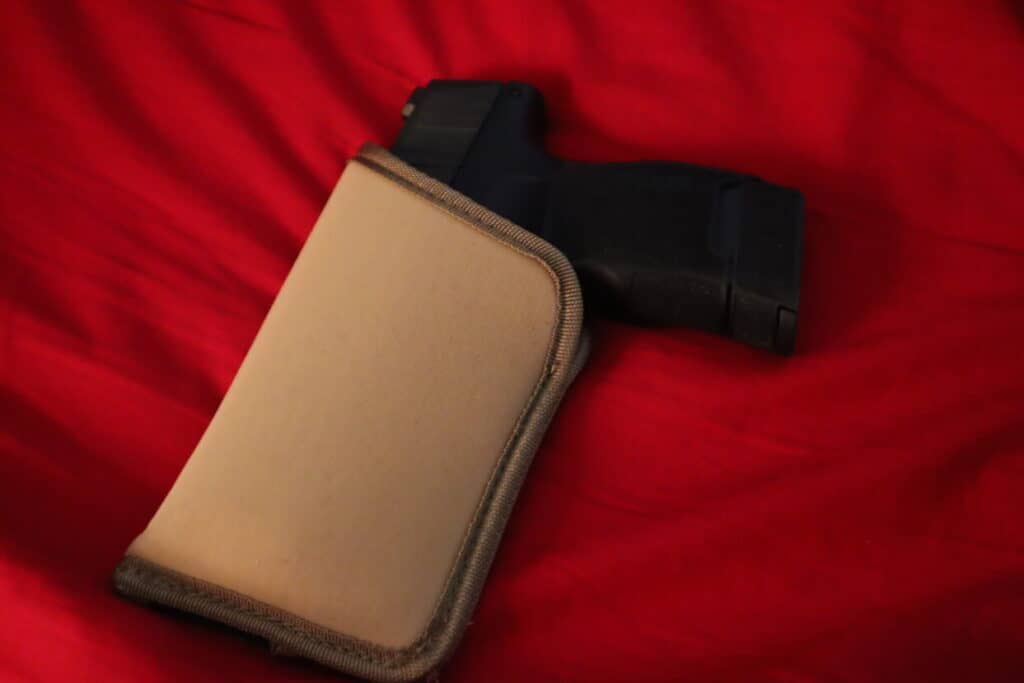
A friction holster will be made of soft fabric with no plastic or metal to irritate your skin.
Kangaroo Style
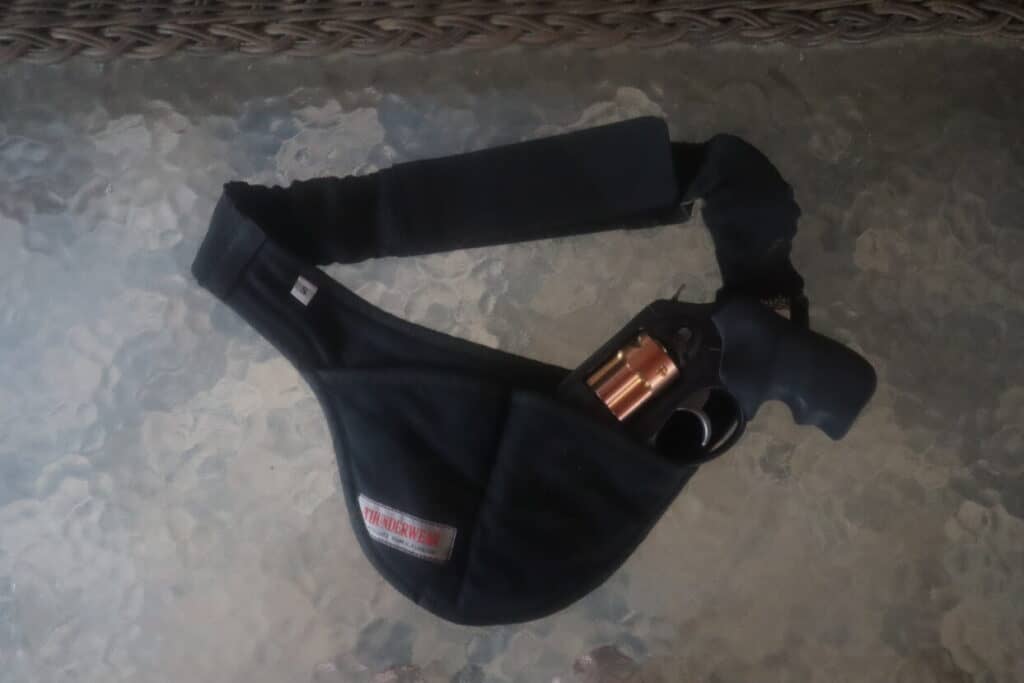
There are holsters that attach directly to your waist with a belt of their own. I recommend an extra layer, like a tank top, to make these more comfortable.
I prefer the kangaroo style pouch that goes around the waist with pockets for the gun and extra bullets at the center of the belly. I have to make sure the pants are generous enough to avoid the impression that I have acquired certain male attributes.
Filling my pockets with keys, a wallet, and a cell phone will take attention away from any impression the gun makes. The one pictured above is by Thunderwear.
Belly Band
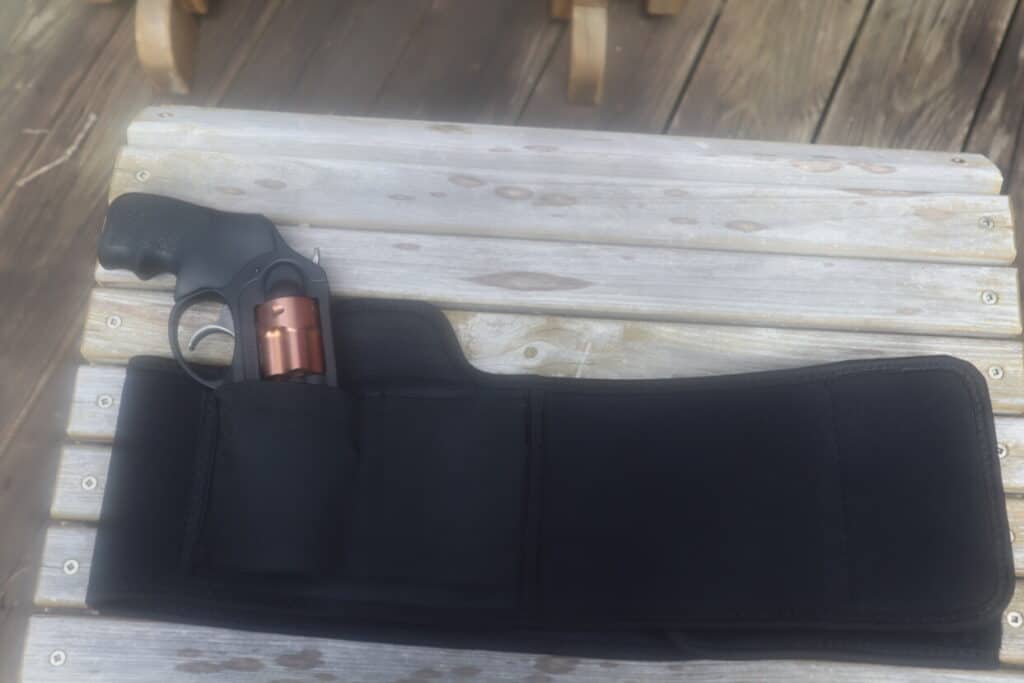
The belly band is an option if you find one that does not take up too much valuable real estate. Typically available in four inches and wider, these provide a nice cinch to the waist and hug the gun to your body with good deep concealment.
They are insulating to the point of keeping you extra warm, so they are better for winter wear. I don’t have a lot of vertical space between my ribs and waist, so the taller ones make me uncomfortable.
I have to wear an undershirt with a belly band because the strong Velcro needed to hold it firmly irritates my skin after several hours of wear.
You can lower the belly band to a position that hugs your hips rather than your waist. Choose the size based on the measurement of the the hips or waist, depending on how you will place it.
You can place the pockets of the belly band at any point on your waistline. Appendix carry is the usual because it is a natural movement to reach just in front of your waist.
A right-handed shooter can draw from the same side, or move the gun to the left of the navel with the grip pointed toward the navel for a crossdraw. Dead center with a belly band does not work for me because the gun pushes against my diaphragm and makes me feel a little faint.
Placing your gun at the back, at the right or left kidney area, will work for some, and the belly band will do a better job of concealing at the back than will IWB or OWB because the gun will be pulled in next to you.
Avoid dead center at the back with any holster because of the risk of spinal injury if you fall backward onto your gun.
Corset Holster
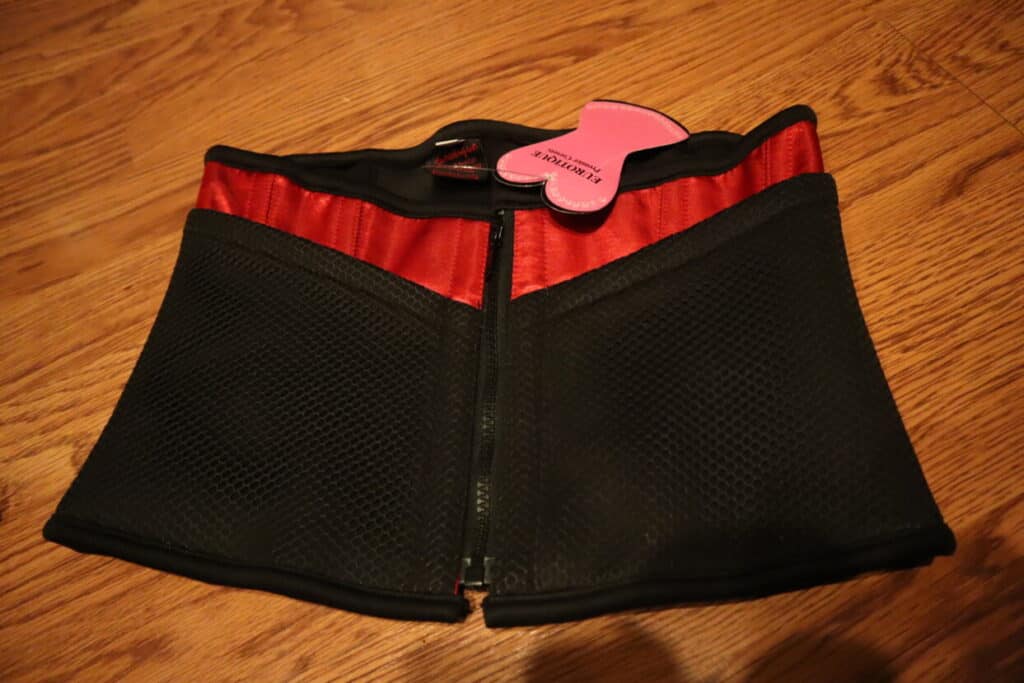
The corset holster will be lighter and thinner than the belly band, with one or more rows of hooks. It will take up more vertical space without making you quite as hot. The silhouette will be attractive and the gun unlikely to show with a corset holster.
One manufacturer makes a ninety-two inch piece of lace, with pockets, that you wrap around your waist or thigh or perhaps your ankle. You tuck it in at the end of the wrap job, like an ACE bandage.
Thigh Holster
The thigh holster will be similar to a belly band and will hold the weapon against your thigh. If you have a stretchy waistband you might reach down into your pants to get the gun, but usually this is for a skirt wearer.
In that case you are reaching under your skirt to draw your gun.
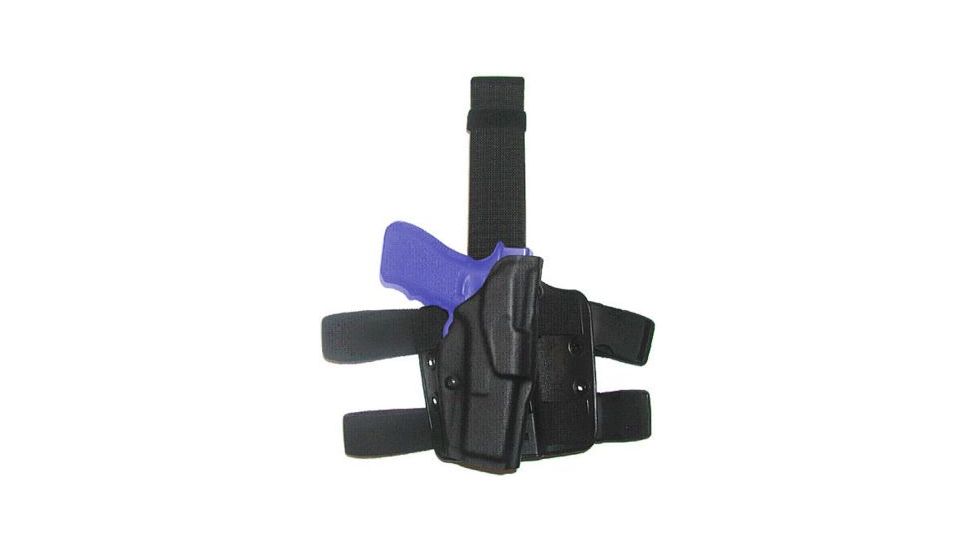
Calf or Ankle Holster
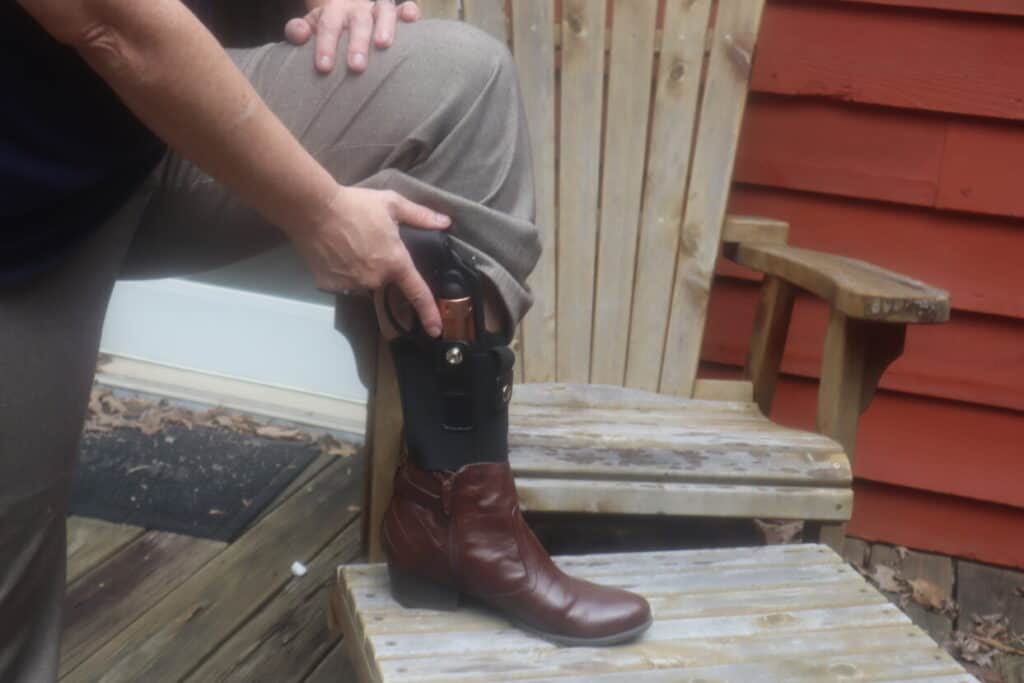
The calf or ankle may also accommodate a holster if you wear boots of sufficient height or if your skirt is long enough to cover the gun in every sitting or standing position. Galco makes an ankle holster available at Cabela’s.
Loose pant legs may also accommodate ankle or calf placement. In this situation, plan how you will get in and out of the car and how you will sit without exposing your gun or resting too much pressure against your skin.
Shoulder Holster
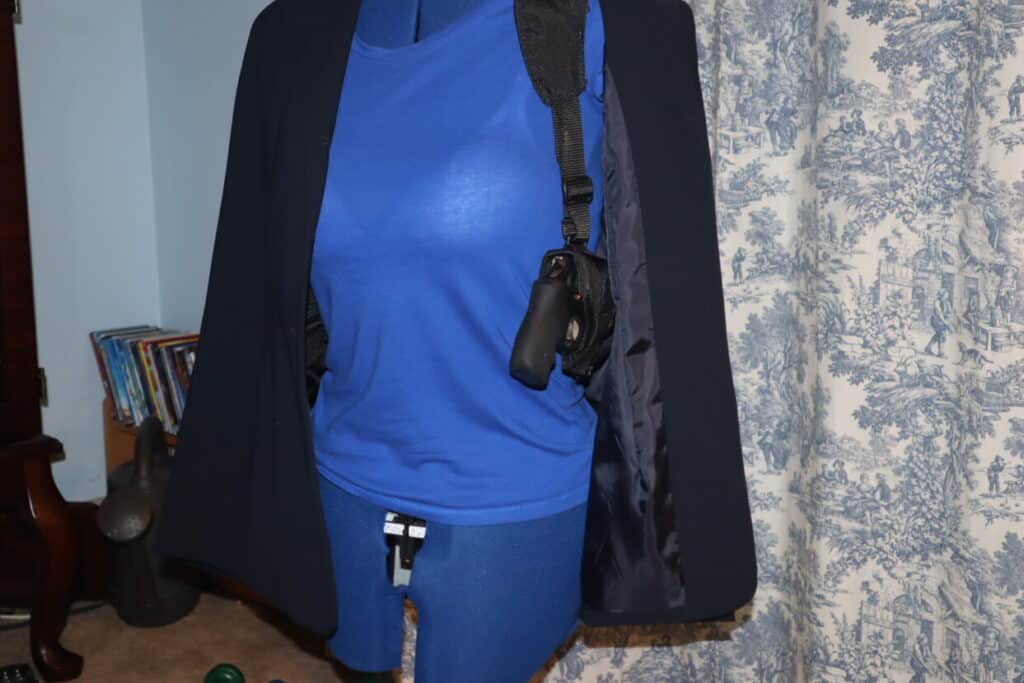
The upper torso provides additional options. A shoulder holster can be hidden under a jacket if you plan to keep the jacket on all day. You can wear the shoulder holster under a shirt that fits generously.
You may have to access the holster by unbuttoning your shirt or pulling it up a bit in front.
Bra Holster
That brings us to the brassiere holster, nicknamed the Flashbang for obvious reasons. You are suspending the gun from the front of your bra with snaps.

This is definitely a case of Your Mileage May Vary. Bustier women can conceal a bigger gun because of the gradient of the curves involved.
Underwear With Holsters Built In
You can find leggings and underwear with pockets for the gun sewn into the garment. I have to say the underwear option puzzles me. How many pairs do you need if you use this method often?

Purse Carry
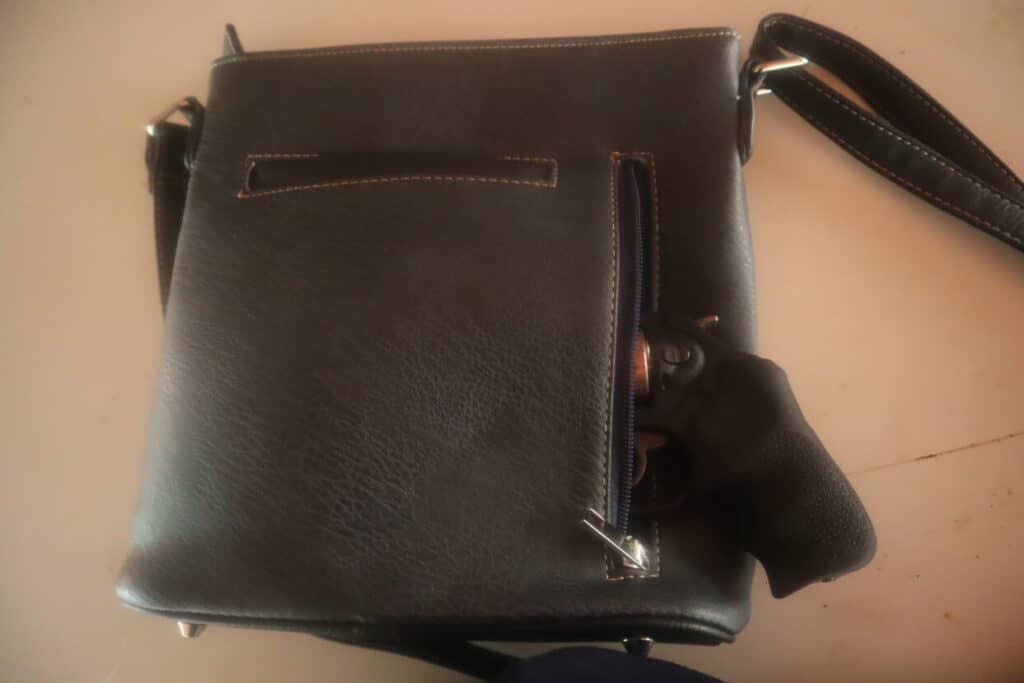
Off body carry is easier but requires keeping track of your gun. You are responsible for everything that happens with your weapon and must keep it under lock and key if you are not directly attached to it.
Purse carry is a classic way to carry when your clothing choices don’t suit carrying on your body. You will find lots of options in gun shops, Western-themed stores, and online.
Make sure you have a dedicated pocket big enough for your holster or that includes a built-in holster.
I wasn’t thinking about left-handed access when I bought a concealed carry purse. Most will have a showy front side that faces out and a pocket in the back that you unzip to get your gun.
If that zipper is on both sides you have ambidextrous access. If it only zips on the right, a left-handed shooter will have to draw with the right hand, wear the purse with the pretty part facing inward, or carry on the other shoulder and learn to do a crossdraw.
This will not be an issue if you gain access from the top of the purse.

Backpacks, Briefcases, and Daytimers
Backpacks, briefcases, and daytimers are other options for off body carry. Manufacturers make all these options with dedicated holster pockets. Make sure you have the option of keeping your carry option next to you all day.
Ensure that the pocket intended for carry is big enough and that you can comfortably reach behind you if you have to draw your gun while carrying a backpack.
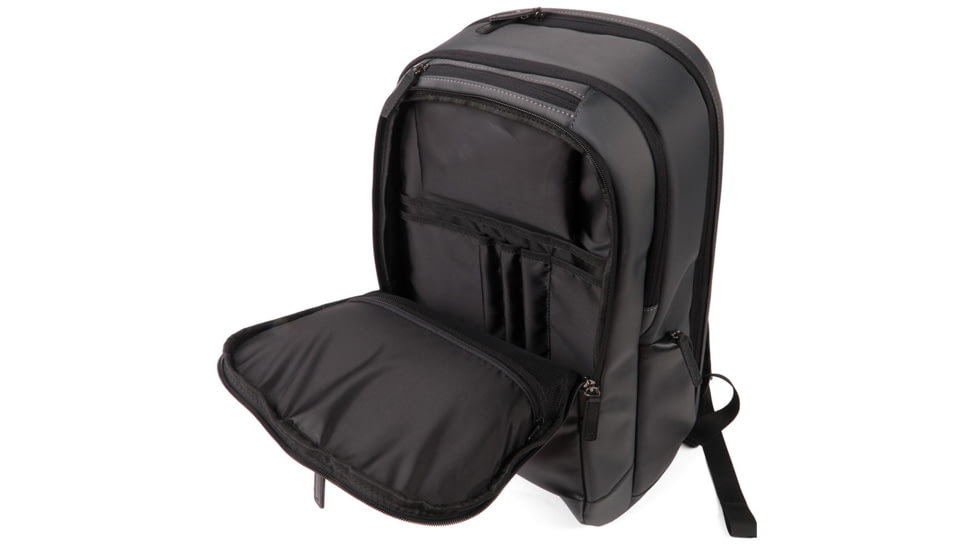
Fanny Pack
A fanny pack is easier to carry and will not signal to anyone that you have a gun. This will be suitable for outdoor activities such as jogging, or for hands-free shopping with the kids.
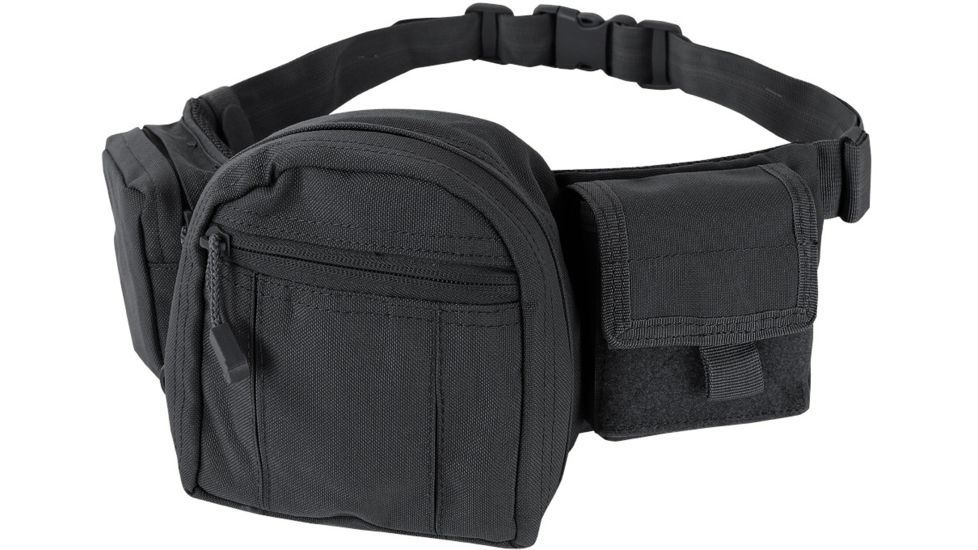
Consider Child Safety
Speaking of the kids, little ones should not have access to your gun. Off body options sometimes come with keys to keep children or others from gaining access.
The security of the key must be weighed against the extra time it will take to draw your gun in a personal defense emergency. If you are like most people, you will try several methods before you choose your every day carry option. Be sure you have a plan for using each option. It will not feel natural to reach under your skirt when someone is threatening you.
Practice your draw from each holster you use. Empty your gun, triple check, keep the muzzle pointed in a safe direction, and practice until you feel the motion becoming automatic.


